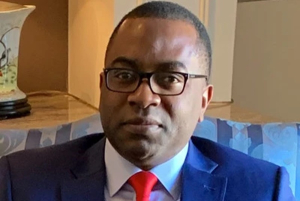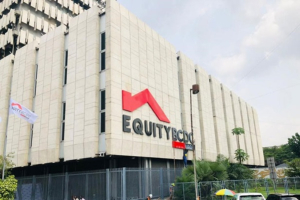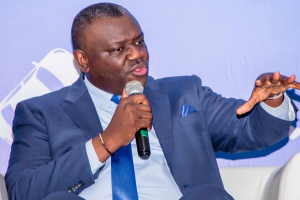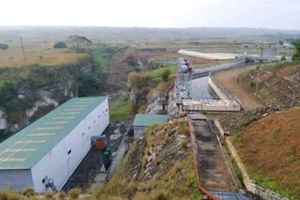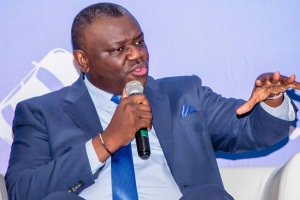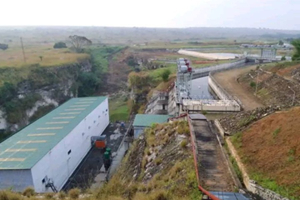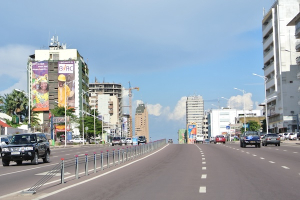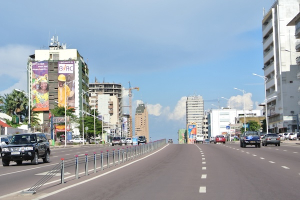Equipe Publication
Mbuji-Mayi : une centrale solaire de 15 MW pour stabiliser l’approvisionnement en eau
Pour pallier les coupures d’eau dans la ville de Mbuji-Mayi, capitale de la province du Kasaï-Oriental, le directeur général de la REGIDESO, David Tshilumba Mutombo (photo), a annoncé, le 26 novembre 2025 lors du forum Makutano, le lancement des travaux de construction d’une centrale photovoltaïque de 15 MW dès janvier 2026. Répondant à l’interpellation d’une habitante de Mbuji-Mayi affirmant ne recevoir de l’eau qu’une fois par semaine, il a indiqué que cette infrastructure doit résoudre les problèmes d’électricité qui perturbent la distribution d’eau dans la ville.
À ce jour, la REGIDESO dépend de l’énergie fournie par la Société nationale d’électricité (SNEL), elle-même tributaire de la production de la centrale hydroélectrique de Tubi-Tubidi, appartenant à la société minière SACIM. Or, les installations de cette dernière connaissent des avaries récurrentes, entraînant des coupures fréquentes qui empêchent une distribution continue de l’eau potable, malgré le bon état du réseau d’adduction de Mbuji-Mayi (plus de 500 Km), considéré comme l’un des plus modernes du pays.
L’entreprise publique affirme disposer de groupes électrogènes, mais le tarif de l’eau ne permet pas de les faire fonctionner en continu. « Le tarif est inférieur au coût de revient. C’est une question que nous posons au gouvernement depuis plus de trois ans… On ne peut pas produire de l’eau à 1,15 dollar le mètre cube et la vendre aux ménages à 25 centime », a indiqué David Tshilumba.
Selon le directeur général, la centrale photovoltaïque, dont les études techniques sont déjà finalisées, sera financée par la coopération allemande. L’Allemagne avait d’ailleurs annoncé en 2022, selon Radio Okapi, un premier projet de centrale solaire de 8 MW destiné à rendre la REGIDESO de Mbuji-Mayi indépendante de la SNEL. La montée en capacité à 15 MW pourrait résulter d’une réévaluation des besoins. David Tshilumba estime en effet que la ville nécessite aujourd’hui entre 12 et 13 MW pour un service normal.
La REGIDESO envisage d’étendre cette autonomie énergétique à d’autres provinces via sa filiale RégiEnergies, créée entre 2023 et 2024. Cette entité a pour mission de produire de l’électricité là où la SNEL fournit insuffisamment, voire pas du tout, notamment dans les zones reculées. Il s’agit d’un retour vers l’énergie : lors de sa création en 1939, la REGIDESO était chargée à la fois de la distribution de l’eau et de l’électricité. Ce n’est qu’en 1978 que le gouvernement lui a retiré ce portefeuille au profit de la SNEL.
Timothée Manoke
Lire aussi :
Mbuji-Mayi : le déficit d’électricité provoque une pénurie d’eau
REGIDESO : un accord avec le Singapourien EFGH pour moderniser la collecte des recettes
Equity BCDC to Finance 1,000 Buses for DRC’s Transco
DRC Transport Minister Jean-Pierre Bemba said Wednesday that Equity BCDC will finance the purchase of 1,000 buses for the public transport operator Transco, a move meant to improve transport in Kinshasa and other cities.
Speaking at the Makutano forum, Bemba said negotiations on the deal are almost complete. He said the financing is supported by a digital ticketing system for Transco that Equity BCDC has already funded.
The minister explained that the system allows the bank to track revenues in real time, ensuring loan repayment because each ticket sale is automatically deposited into a dedicated account.
In October, Transco Director General Sylvestre Bilambo and Equity BCDC CEO Willy Mulumba Kabadi met with Bemba to review progress on the initiative. During the meeting, Mulumba reaffirmed the bank’s commitment to improving transport services in Kinshasa.
Bemba said the partnership demonstrates that reliable risk-mitigation tools exist in the sector and urged other banks to finance similar projects.
Ronsard Luabeya
Transport urbain : Equity BCDC en voie de financer 1 000 bus pour Transco
Lors de son passage au forum Makutano le 26 novembre 2025, le ministre des Transports, Jean-Pierre Bemba, a annoncé, sans le nommer explicitement, qu’Equity BCDC financera l’acquisition de 1 000 bus destinés à la société publique Transco, afin d’améliorer la mobilité urbaine à Kinshasa et dans l’ensemble de la République démocratique du Congo.
Selon le ministre, qui affirme que les négociations sont « pratiquement bouclées », cette opération est rendue possible grâce au projet de digitalisation de la billetterie de Transco déjà financé par la même banque. D’après Jean-Pierre Bemba, la digitalisation permettra à Equity BCDC de contrôler les recettes garantissant le remboursement du prêt, puisque le produit de la vente de chaque billet sera versé automatiquement sur un compte bancaire dédié, offrant ainsi un suivi rigoureux et en temps réel des revenus.
En octobre dernier, le directeur général de Transco, Sylvestre Bilambo, et le directeur général d’Equity BCDC, Willy Mulumba Kabadi, avaient été reçus par le ministre pour faire le point sur l’avancement du projet. Lors de cette réunion, le directeur d’Equity BCDC avait confirmé l’engagement de la banque en faveur de l’amélioration de la mobilité urbaine à Kinshasa.
Le ministre a présenté ce partenariat comme un exemple démontrant l’existence de mécanismes efficaces de mitigation du risque, afin d’encourager d’autres banques à s’engager dans le financement des projets de son secteur.
Ronsard Luabeya
Lire aussi :
Transco digitalise sa billetterie avec l’appui de Pimacle et Equity BCDC
Transport urbain à Kinshasa : Transco se renforce avec 30 bus, mais les défis demeurent
DR Congo Seeks Tighter Regulation of Facebook, TikTok, X
The Democratic Republic of Congo plans to tighten oversight of major digital platforms operating in the country, Digital Economy Minister Augustin Kibassa said on Tuesday.
Speaking at the Africa Digital Innovation Summit (ADIS 2025) in Kinshasa, Kibassa cited Facebook, Twitter and TikTok among the companies that, he said, operate in the DRC with little supervision while earning substantial revenue from the local market.
Kibassa said talks are advancing, with several options under review, including a regional approach involving neighboring states. He said he also wants to work through African coalitions to strengthen countries’ bargaining power with global digital firms. The minister said he has already begun discussions with the Smart Africa alliance, though progress remains limited for now.
“They operate here and profit heavily from our market. That weakens our economy. I believe it is in their interest to listen to us,” he said.
Kibassa also called for tighter rules on the content carried by these platforms. He pointed to TikTok, saying its content is more tightly controlled and education-oriented in China, unlike what is accessible in the DRC. He said a stronger framework, backed by penalties, is needed to curb abuses seen on social networks. He added he plans to work with the communication ministry to reinforce the national system for regulating digital content and services.
The steps taken by Kinshasa mirror a broader global push to rein in digital giants. In Europe, the European Union and several member states have stepped up efforts in recent years to regulate large online platforms. The EU’s Digital Services Act, in force since August 2023 and applicable to all digital services from February 2024, aims to improve consumer protection and tighten oversight of platform practices.
Ronsard Luabeya
Commissioning of Kakobola Hydro Plant Set For January
Democratic Republic of Congo's Kakobola hydroelectric plant will be commissioned within the next 47 days, by January 2026, the minister of water resources and electricity said on Wednesday.
Aimé Sakombi Molendo announced the timeline for the 10.5-megawatt plant during the Makutano Forum. The infrastructure, whose construction began in 2010, is intended to supply power to the cities of Kikwit, Idiofa and Gungu, as well as the Catholic missions of Totshi and Aten, and the village of Butshamba in Kwilu province.
He said a note was being presented to the Council of Ministers this Friday to select an operator. "There was a lot of legal contention. To move forward, we have asked the government to authorize us to use Article 39 for a direct agreement," Molendo said. "This clears the way and the operator can directly take over this plant."
According to the minister, the final technical and financial prerequisites were resolved through the direct intervention of the President of the Republic, paving the way for the project's completion.
On the ground, the connection of households and businesses is ongoing. The construction of transmission lines and distribution networks was announced during the Council of Ministers on May 23, 2025.
Molendo also indicated that, ahead of the launch, a visit by the head of state is planned between Dec. 9 and Dec. 13 in the Kakobola area. This visit is expected to mark one of the final institutional steps before the plant becomes operational.
Boaz Kabeya
Facebook, TikTok, X… : Kinshasa veut durcir la régulation
Lors de l’Africa Digital Innovation Summit (ADIS 2025), organisé le 25 novembre 2025 à Kinshasa, le ministre de l’Économie numérique, Augustin Kibassa (photo), a annoncé que son ministère prépare un renforcement des politiques de contrôle et de régulation des activités des grandes plateformes numériques actives en République démocratique du Congo, dont Facebook, Twitter et TikTok.
Selon le ministre, ces entreprises opèrent en RDC sans véritable encadrement, alors même qu’elles génèrent d’importants revenus dans le pays. Pour accélérer le processus, il affirme que des discussions sont en cours et que plusieurs pistes sont examinées, notamment une stratégie sous-régionale visant à mobiliser les États voisins. Augustin Kibassa souhaite également s’appuyer sur des coalitions africaines pour renforcer la position des pays face aux multinationales du numérique. Il indique avoir déjà engagé des échanges avec Smart Africa, tout en reconnaissant l’absence d’avancées concrètes à ce stade.
« Ils œuvrent ici. Cela fragilise notre économie alors qu’ils gagnent beaucoup d’argent. Je crois qu’ils ont intérêt à nous écouter », a-t-il déclaré.
Le ministre a aussi insisté sur la nécessité de réguler plus strictement les contenus diffusés par ces plateformes. Il a évoqué le cas de TikTok, dont les contenus en Chine seraient, selon lui, soumis à un contrôle plus rigoureux et davantage orienté vers l’éducation, contrairement à ceux accessibles en RDC. Il estime qu’un cadre plus strict, accompagné de sanctions, est indispensable pour limiter les dérives observées sur les réseaux sociaux. Il dit vouloir travailler avec le ministère de la Communication afin de renforcer la politique nationale de régulation des contenus et des activités numériques.
Les initiatives engagées par Kinshasa s’inscrivent dans une dynamique internationale plus large. En Europe, l’Union européenne et plusieurs États membres ont multiplié ces dernières années les actions visant à encadrer l’activité des géants du numérique. Le règlement européen sur les services numériques, entré en vigueur le 25 août 2023 et appliqué à l’ensemble des services numériques depuis le 17 février 2024, vise notamment à mieux protéger les citoyens et à encadrer les pratiques des plateformes en ligne.
Ronsard Luabeya
Lire aussi :
Centrale de Kakobola : mise en service prévue d’ici janvier
Lors de son passage au Forum Makutano, le 26 novembre 2025, le ministre des Ressources hydrauliques et de l’Électricité, Aimé Sakombi Molendo, a annoncé la mise en service de la centrale hydroélectrique de Kakobola (10,5 MW), dans les 47 prochains jours, soit d’ici janvier 2026. Cette infrastructure, dont les travaux ont été lancés en 2010, doit alimenter les villes de Kikwit, Idiofa et Gungu, ainsi que les missions catholiques de Totshi et Aten, et le village de Butshamba, dans la province du Kwilu.
« Il y a une note qui passe ce vendredi en Conseil des ministres sur le choix de l’exploitant. Il y avait beaucoup de juridisme. Pour aller de l’avant, nous avons demandé au gouvernement de nous autoriser à recourir à l’article 39 sur l’entente directe. Comme ça, tout est nettoyé et l’exploitant peut directement reprendre cette centrale », a-t-il précisé.
À l’en croire, les derniers prérequis techniques et financiers ont été levés grâce à l’intervention directe du président de la République, ouvrant la voie à la finalisation du projet.
Sur le terrain, le raccordement des ménages et des entreprises se poursuit. La construction des lignes de transport et des réseaux de distribution avait été annoncée lors du Conseil des ministres du 23 mai 2025.
Le ministre a également indiqué que, dans la perspective du lancement, une itinérance du chef de l’État est prévue entre le 9 et le 13 décembre dans la zone de Kakobola. Cette visite devrait marquer l’une des dernières étapes institutionnelles avant la mise en service effective de l’infrastructure.
Boaz Kabeya
Lire aussi :
Centrale de Kakobola (10,5 MW) : le chantier en phase finale, 15 ans après son lancement
Kinshasa Announces New Expressway to Ease Access to Ndjili Airport
The Democratic Republic of Congo will begin construction in January 2026 on a new highway to link Kinshasa's city center to Ndjili International Airport, Transport Minister Jean-Pierre Mbemba announced on Nov. 26.
The project, announced at the Makutano forum, aims to reduce a journey that can often take several hours.
“The plan is to build a highway starting from Triumphal Boulevard, running through Sendwe, June 30 Boulevard, Limete and Lumumba Boulevard all the way to the airport,” Mbemba said. “We will widen the existing roads, build tunnels in some sections and flyovers in others.”
According to the minister, the longest structure will stretch 1.2 kilometers and will be built in the Tshangu area.
Mbemba added that the project was approved by the Council of Ministers about six weeks ago, and the Congolese Agency for Major Public Works is now carrying out technical studies. He also said a second highway project is being prepared, with more details to be released once it reaches a more advanced stage.
Boaz Kabeya
Kinshasa : une voie rapide annoncée pour fluidifier l’accès à l’aéroport
Rallier l’aéroport international de N’Djili à partir du centre administratif de Kinshasa peut parfois prendre plusieurs heures. Pour réduire ce délai, le ministre des Transports, Jean-Pierre Mbemba, a annoncé, le 26 novembre 2025 lors du forum Makutano, le démarrage en janvier 2026 des travaux d’aménagement d’une voie rapide reliant le centre de Kinshasa à l’aéroport.
« L’idée, c’est de pouvoir créer une voie rapide à partir du boulevard Triomphal, en passant par Sendwe, le boulevard du 30 Juin, Limete, le boulevard Lumumba jusqu’à l’aéroport. On va élargir les routes et, sur certains tronçons, des tunnels vont être créés et sur d’autres des flyovers (ponts) ». L’ouvrage le plus long fera 1,2 km et sera érigé du côté de la Tshangu, a précisé le ministre.
Selon Jean-Pierre Mbemba, le projet a été validé par le Conseil des ministres il y a un mois et demi, et l’Agence congolaise des grands travaux (ACGT) réalise actuellement les études techniques. Il a également indiqué qu’un deuxième projet de voie rapide est en préparation, dont les détails seront communiqués après sa phase de maturation.
Boaz Kabeya
Lire aussi :
Kinshasa : reprise du trafic sur le boulevard Lumumba, principal accès à l’aéroport
DR Congo Water Utility REGIDESO Agrees To Digital Overhaul With Singapore’s EFGH
Singapore-based Embed Financial Group Holdings (EFGH) said on Nov. 20 it signed a master services agreement with the Water Distribution Authority (REGIDESO SA) to accelerate the utility’s digital transformation, including modernizing how it collects payments from households and businesses.
According to the statement, REGIDESO and EFGH will jointly develop secure digital channels for bill payments, security features and new financial tools designed to simplify and speed up payments and make them more accessible. The initiative aims to improve payment tracking, enhance transparency, strengthen investor confidence and help REGIDESO raise capital to finance its modernization.
REGIDESO already offers digital payment services. Information on its website shows that customers can pay bills through a mobile app available on the App Store and Google Play or via its website. These services currently cover 11 of the DRC’s 26 provinces. For customers without internet access, a USSD code is also available.
EFGH describes itself as a specialist in digital payments, financial platforms and digital ecosystems. The company said it operates in several African markets, including Ghana, where on Oct. 29 it announced a joint venture with the District Assemblies Common Fund (DACF). That partnership aims to build a “Finternet,” a digital financial infrastructure designed to connect governments, residents and businesses. According to EFGH, this Finternet will link payments, credit and insurance the way the internet links information, helping Ghanaian districts manage funds and public services more effectively while creating new revenue streams.
Timothée Manoke





